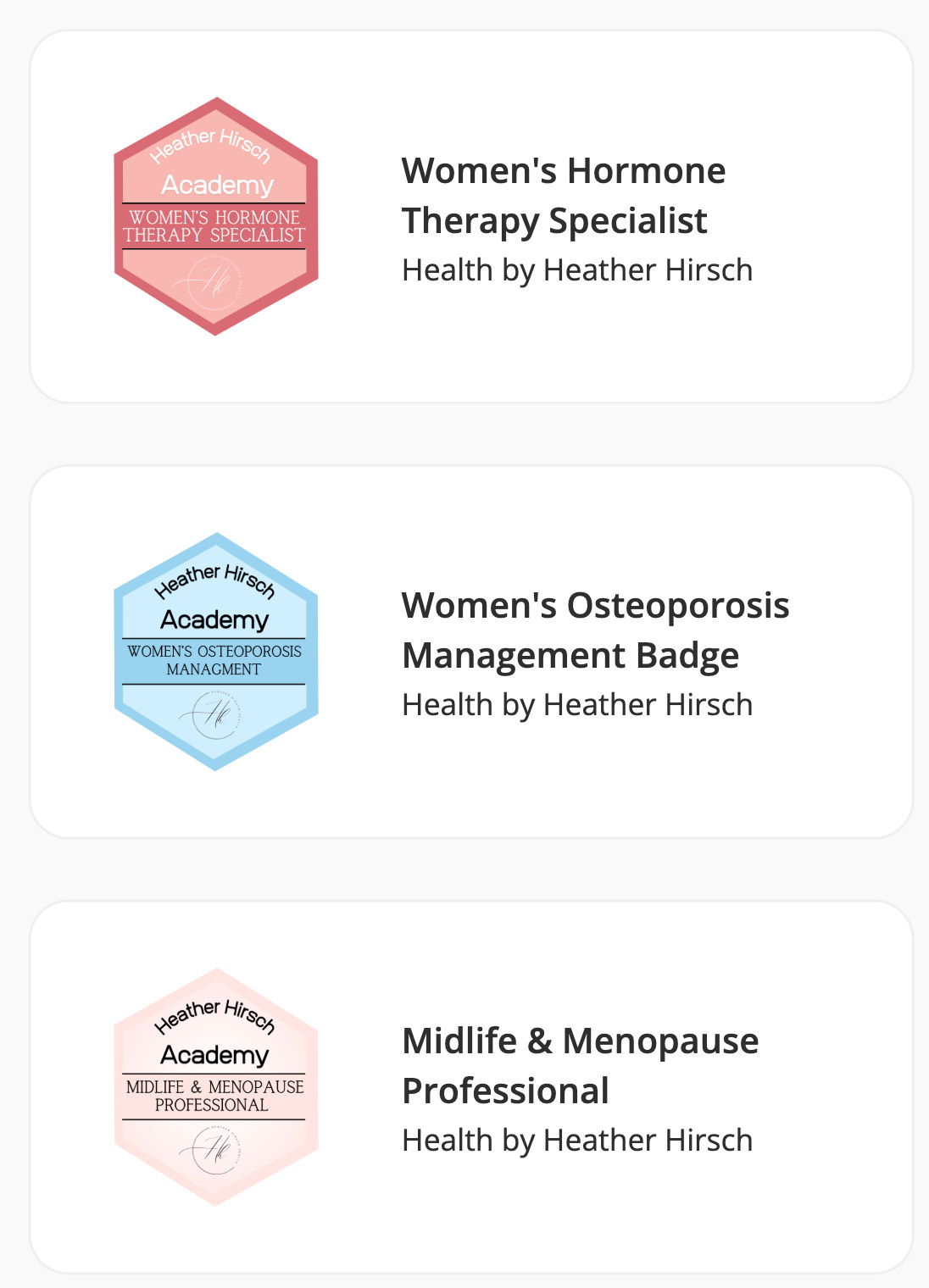How Teaching Midlife Care Led Me to Create a New System of Medical Education in the Digital Era
When I first started treating women in midlife, I felt uniquely prepared—because I had something almost no one else did: a rare, specialized fellowship in menopause medicine. But that training, while invaluable, made me realize an even more urgent truth: there were simply too few of us. The demand from women needing expert menopause care was overwhelming, and the traditional pipeline for training doctors in this specialty didn’t exist at any meaningful scale. I knew I had to figure out a model that could spread this level of care to far more clinicians.
What I realized was that thousands of clinicians were getting certified through The Menopause Society (formerly NAMS), but many still lacked the day-to-day confidence to see patients independently. They had the credential—but not the clinical readiness. There was a gaping hole in our medical system: a specialty without a training path.
Reinventing Medical Education in Response to a Crisis: Meeting the Desperation of Midlife Women Head-On
In academic medicine, the best training I received came from being a fellow at the Cleveland Clinic: working side-by-side with my attendings like Dr. Holly Thacker, learning not just the guidelines, but how to think clinically. How to navigate uncertainty. How to treat the person, not just the hormone level.
But traditional fellowships are few, expensive, and inaccessible to most clinicians.
So I asked: What if we could bring the essence of a fellowship—the attending-fellow relationship—to anyone, anywhere?
So I built my course on that premise. It wasn’t just lectures or slide decks. It was:
Live weekly sessions where I walk through real cases and answer student questions
A private clinical community where every student can ask questions, share dilemmas, and get mentorship
A growing digital curriculum rooted in real patient care, not pharma slide decks or abstract reviews
We weren’t just creating a course. We were responding to a tidal wave of unmet need—a generation of women demanding care that simply wasn’t being taught in most medical schools or residencies. So we built a new kind of training system—one where clinical confidence comes first, and where support and mentorship don't end with a certificate.
In 2023 and 2024, demand for this kind of education exploded. Clinicians from all over the country—and increasingly the world—enrolled in our program, eager to finally understand how to manage perimenopause and menopause with skill and confidence. What started as an experiment in scaling mentorship quickly turned into a full-blown movement.
Now, thousands of trained clinicians are out there practicing midlife medicine after taking this training. Many have even launched their own clinics, dedicating themselves entirely to this phase of care—because the demand is that immense, and the gratitude from patients is that real.
Building the Infrastructure: Credentials, CME, and Verifiable Trust
To make this model scalable, we needed to go beyond content. We needed infrastructure.
So we added digital credentialing. Every graduate now receives a Credly badge —a verified, clickable credential that patients, peers, and employers can instantly validate. It's a simple but powerful layer of trust in an age of confusion and misinformation.
We also built CME into the core of our system. Continuing Medical Education credits are more than a bureaucratic checkbox—they are essential for clinicians to invest time in learning and for systems to recognize its value. For too long, midlife care had been left off the map. This put it back in the center.
Building the Directory: A Place for Patients to Find Trained Clinicians
As the number of trained clinicians grew, something else became clear: patients needed to find them.
There was no single place where you could see who had advanced midlife training. The NAMS directory only told part of the story—and often lacked key info like clinical focus or appointment access.
We in 2024 we launched the Heather Hirsch Academy Directory—a living map of clinicians who’ve completed our coursework and demonstrated competence in midlife care. It’s searchable, trustworthy, and designed to bridge the gap between education and access.
And patients are using it. The directory now gets daily traffic from women looking for care—proof that clinical education isn’t just academic. It’s a pipeline to real-world impact.
What’s Next: AI Copilots, Global Access, and the Next Frontier of Medical Education
The next chapter of this work is twofold: smarter tools and wider reach.
We're embedding AI copilots into our education system. These are training accelerators. AI tools that:
Instantly surface evidence-based answers to clinical questions in our forums
Summarize the latest menopause research for our learners in plain language
Help clinicians quiz themselves, rehearse case-based reasoning, and retain more from each module
But it's not just about speed and scale. It's about access.
This training model wasn't built to live inside a single country. Women around the world are facing the same challenges: misunderstood, dismissed, undercared for in midlife. The demand for evidence-based, empathetic menopause care is global.
And so our next focus is taking this system international. Localized versions of the curriculum, partnerships with health ministries, translated materials, and new cohorts across continents. Because this isn't just a gap in the U.S. medical system—it's a gap in global healthcare.
We didn't set out to build a global training system. But the need made that decision for us.
Want to see the directory or join the next cohort? Head to Heather Hirsch Academy.


